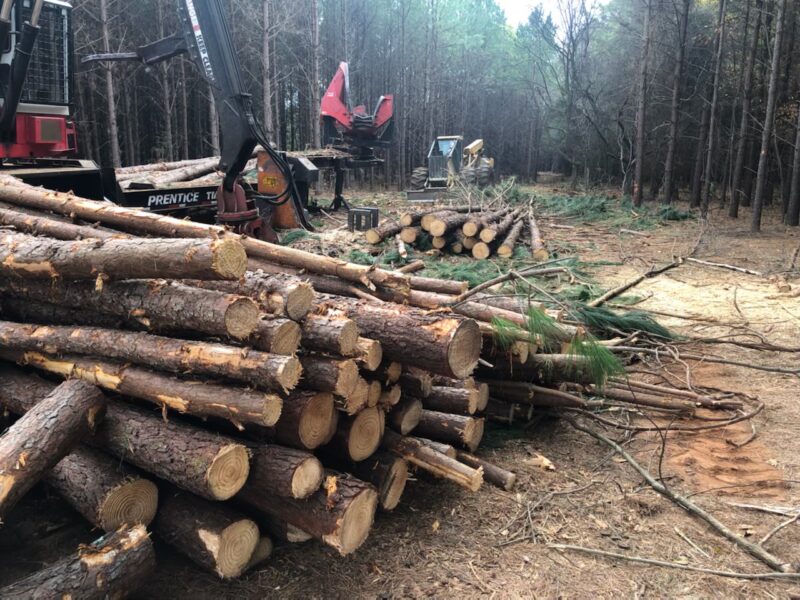NEWS
Thinning Trees on Farm Helps Environment and Barger Family

(Bill Giduz photo)
People driving out of town on Concord Road may be surprised to pass a large gash in the thick pine forest on the south side of the road. In fact, the missing trees represent a gift from the landowners to their four children. Four decades ago, Hugh and Brenda Barger were considering what would be the best way to leave a legacy for their children. The first thought was to leave them the cattle that Hugh had tended for years on his farm. But he knew that cows require constant attention and would be a burden to the children, rather than a gift. On the other hand, trees could be managed remotely for decades and sold for cash to divide between the quartet of siblings when the time arose. So, in the 1980’s Hugh began bit by bit converting cows to pine trees.
The Barger roots grow deep in Davidson. Hugh grew up on the farm and graduated from the college in the Class of 1961. They moved back as a family to Davidson in 1975, built the farmhouse on the north side of Concord Road, and moved permanently into it in 1977.

Tree farming at Barger Farm. (Bill Giduz photo)
The current work is an agricultural process of thinning the forest, which removes 150-200 trees of every 600 per acre, and helps the overall forest remain healthy. The job is being conducted according to the regulations of the state of North Carolina Forestry Service and is being done by three workers from Curtis Logging of Mooresville. The work is expected to continue well into the month of December. “It’s really interesting to see them work and see how much they can do in a short period of time,” said Hugh.
Through the years, the Bargers have planted 350 acres of loblolly pines. Some years, they planted 20-30 acres and other years they planted as many as 70 acres. The trees are first thinned at about 15 years old by removing every fourth row and removing poorly performing trees, as well. These trees go to a pulp mill to be converted into paper. The second thinning occurs when the trees are approximately 25 years of age, and those logs are made into boards. The remaining trees may be clear cut when they are 35-40 years old, and then the process begins once more.
The Bargers’ plan of succession solves the question of leaving a legacy for the children. But there’s one aspect they unfortunately can’t control—the price of lumber. Hugh explained, “During the 70’s and 80’s, many landowners in the South planted pine trees that are now ready for harvest. But the price of lumber and individual boards on the futures market is high and there are not enough sawmills to convert logs to boards. As a result, the farmer is paid a small fraction of the intrinsic value of his timber. Hugh concluded, “There is not much money in pulpwood now, but it’s enough to pay the taxes. I hope for my children that the market will get better over the next 15-30 years, but who knows?”
Bill Giduz
Bill Giduz was the son who followed his father’s footsteps into journalism. He has been involved his entire life with news and photography in schools he attended and jobs he’s held. He believes now that he’s got a few good years left to devote to The News of Davidson.


